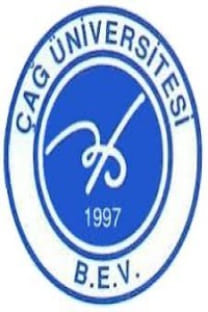MEDİKAL TEKSTİL ÜRÜNLERİNİN SEÇİMİNDE FAYDA / MALİYET ANALİZİ
Fayda/Maliyet Analizi, Analitik Hiyerarşi Prosesi (AHP)
___
Akter, N., Trankler, J.; (2003) “An analysis of possible scenarios of medical waste management in Bangladesh”, Management of Environmental Quality, 14, 242-255.Barker, R. L., Scruggs, B. J., Shalev, I.; (2002) “Evaluating operating room gowns: Comparing comfort of nonwoven and woven materials”, International Nonwovens Journal, 11.
Baykasoğlu, A., Dereli, T., Yılankırkan, N., Yılankırkan, A.; (2005) “Dokusuz/örgüsüz (nonwoven) kumaş üretim teknolojileri, uygulama alanları ve uygulama alanlarına endüstri mühendisliği perspektifinden bakış”, TMMOB Makine Mühendisleri Odası – TMMOB Tekstil Mühendisleri Odası, Tekstil Teknolojileri ve Tekstil Makineleri Kongresi, pp.197-204, 11–12 Kasım 2005, Gaziantep.
Baykasoğlu, A., Dereli, T., Yılankırkan, N.; (2006) “Tekrar kullanılabilir ve tek kullanımlık medikal tekstil ürünleri seçiminde fayda maliyet analizi”, Yöneylem Araştırması ve Endüstri Mühendisliği 26. Ulusal Kongresi Bildiriler Kitabı –YA/EM 2006, pp. 402-405.
Duran, K.; (2004) Dokusuz Yüzeyler, Teknik Fuarcılık Yayınları.
EDANA, (1998) European Disposables and Nonwovens Association, What are Nonwovens?; Defination of Nonwovens ISO9092:1988, http://www.edana.org/story.cfm?section=|edana_nonwovens&story =definition.xml
EDANA, (2005) Edana Statistics 2004, Brussels, Haziran 2005.
EDANA, (2004) Statistics 2003, released November 2004, http://www.edana.org/documents_sections/edana_nonwovens/FICH E%202003%20NONWOVENS%20BROCHURE%20WEBSITE.pdf
EDANA; Making Nonwovens, http://www.edana.org/story.cfm?section=|edana_nonwovens&story =making.xml
Gruendemann, B. J., (1999) Healthcare Waste Management- A Template for Action, Medical Waste Institute, Washington D.C.
INDA, (1999)Nonwovens Fabric Handbook, Association of the Nonwovens Fabric Industry, Raleigh NC.
INDA, (2001) Association of the Nonwovens Fabrics Industry, About Nonwovens, Use of Gowns and Drapes in Healthcare.
Koch, F. T.; (2001) “Barrier products”, Infection Control Today, 40-42 from http://www.infectioncontroltoday.com/articles/111topics.html
Rutala, W., Weber, D.J.; (2001) “A Review of Use of Gowns and Drapes in Healthcare”, University of North Carolina Healthcare System, INDA.
Saaty, T.L. (1982) “Decision Making for Leaders”, The Analytic Hierarchy Process for Decisions in a Complex World, Belmont, CA, Lifetime Learning Publications.
Tummala, V.M.R., Chin, K.S., Ho, S.H.; (1997) “Assessing success factors for implementing CE: A case study in Hong Kong electronics industry by AHP”, International Journal of Production Economics, 49, 265-283.
Werner, H.P., Feltgen, M., Schmitt, O.; (2001) “Quality of surgical drapes and gowns”, Hospital, 3, 11-14.
Zeigler, J.P.; (2002) “Comfort performance of protective apparel”, Nonwovens World, 11, 123.
- ISSN: 1304-8392
- Yayın Aralığı: Yılda 2 Sayı
- Başlangıç: 2004
- Yayıncı: Çağ Üniversitesi
BİREYSEL DEMOGRAFİK DEĞİŞKENLERİN İŞ DOYUMU İLE İLİŞKİSİNİN FİNANS SEKTÖRÜNDE İNCELENMESİ
MEDİKAL TEKSTİL ÜRÜNLERİNİN SEÇİMİNDE FAYDA / MALİYET ANALİZİ
Adil BAYKASOĞLU, Türkay DERELİ, Nevra YILANKIRKAN, Ali İhsan SÖNMEZ
KURUM İÇİ STRES KAYNAKLARININ KURUMSAL BAĞLILIĞA ETKİSİ: ŞANLIURFA BELEDİYESİ ÖRNEĞİ
İHRAÇ KAYITLI TESLİMLERDE KDV UYGULAMASINDA SON DURUM VE MUHASEBESİ
MEDİKAL TEKSTİL ÜRÜNLERİNİN SEÇİMİNDE FAYDA / MALİYET ANALİZİ
Adil BAYKASOĞLU, Türkay DERELİ, Nevra YILANKIRKAN, Ali İhsan SÖNMEZ
İHRAÇ KAYITLI TESLİMLERDE KDV UYGULAMASINDA SON DURUM VE MUHASEBESİ
KURUM İÇİ STRES KAYNAKLARININ KURUMSAL BAĞLILIĞA ETKİSİ: ŞANLIURFA BELEDİYESİ ÖRNEĞİ
BİREYSEL DEMOGRAFİK DEĞİŞKENLERİN İŞ DOYUMU İLE İLİŞKİSİNİN FİNANS SEKTÖRÜNDE İNCELENMESİ
